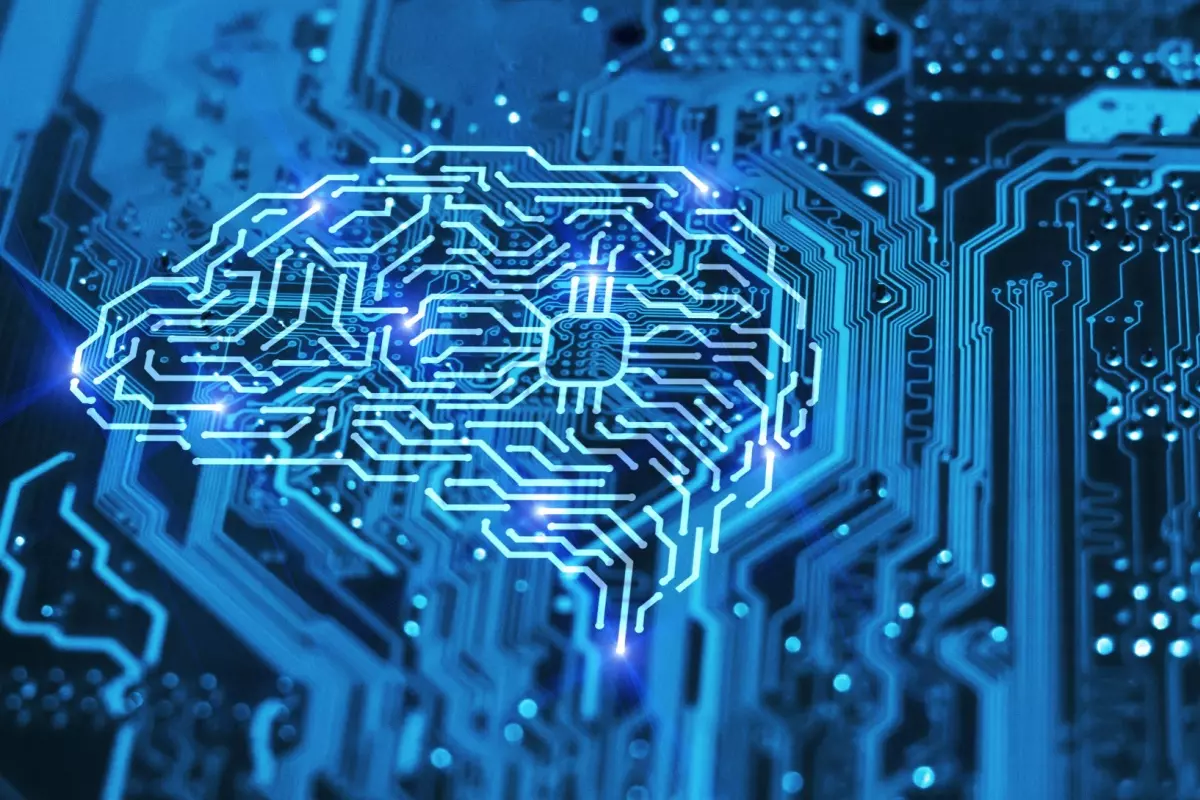Deep Learning vs Neural Networks – What’s the Difference?
When we enter the world of artificial intelligence (AI), deep learning and neural networks often steal the spotlight. But what truly sets them apart? It’s easy to blur the lines between these two powerhouses of technology, yet understanding the difference between neural networks and deep learning helps unlock AI’s potential.
The stakes are high, and the implications are vast, touching everything from our daily interactions with technology to tackling global challenges. Whether you’re deeply embedded in the tech world or just curious, this article unravels the differences between deep learning vs. neural networks. So, read on to find out!
What Is a Neural Network?
A neural network is a series of algorithms modeled after the human brain. It’s designed to recognize patterns and interpret data in a way that mimics how humans think and learn. Imagine it as a complex web of neurons – similar to our brain’s neural network – that works independently to make sense of the information it receives, whether that’s text, images, or sounds.

Picture teaching a child to differentiate between cats and dogs. You’d show them pictures of both animals, pointing out features like the shape of the ears, the size of the tail, or the texture of the fur. Over time, the child would learn to recognize these animals based on the patterns they’ve observed.
A neural network functions in a similar way. It takes in data, processes it through layers of interconnected “neurons” (small processing units), and learns to recognize patterns. These layers are where the magic usually takes place. The first layer might learn to recognize basic shapes or colors. The next layer might identify more complex patterns like textures, sizes, etc. As data passes through these layers, the network learns from its successes and mistakes, gradually improving its ability to make accurate predictions and classifications.
Neural networks are the backbone of many modern conveniences. For instance, they are used to recognize your friends’ faces in photos on Facebook or filter out spam emails. They’re also behind the voice recognition in virtual assistants and the recommendation systems on streaming platforms, subtly shaping our digital experiences by learning from data.
What Is Deep Learning?
Deep learning in data science takes the concept of neural networks a step further, diving into more complex and intricate patterns within data. Think of it as the difference between having a casual conversation in a new language and immersing yourself in that language’s nuances, idioms, and literature.
Deep learning is a subset of machine learning, employing layers of neural networks to analyze various factors and relationships within large datasets. Each layer of neurons processes the input data, extracts increasingly complex features, and passes them to the next layer. For instance, in image recognition, the layers may follow from basic shapes in images to intricate emotional cues in facial expressions like happiness or sadness.
This ability to process and learn from data at multiple levels allows deep learning models to perform tasks with remarkable accuracy and detail.
Deep learning powers multiple innovative applications that transform our daily lives. It’s the genius behind self-driving cars that interpret and navigate the complexities of roadways, the brains of virtual assistants, and the technology enabling healthcare systems to diagnose diseases.
What’s the Difference Between Deep Learning and Neural Networks?
While both are intertwined in the fabric of AI, they serve different purposes and operate on varying scales of complexity. Here are the main differences between deep learning vs. neural networks that set them apart:
- Architecture: Neural networks consist of a few layers of neurons, making them simpler and more suited for straightforward tasks like recognizing handwritten digits. Deep learning networks, on the other hand, have many layers – sometimes hundreds – that allow them to learn from data in a more detailed and nuanced way. A deep learning model could interpret complex handwriting or even generate handwritten text.
- Complexity and Depth: The “deep” in deep learning refers to the number of layers through which data is processed, allowing for the extraction of increasingly sophisticated features. Early layers might identify simple shapes or colors, while deeper layers can understand complex relationships within the data, such as the emotional state of a person’s facial expression.
- Training Data and Resources: Due to its complex architecture, deep learning requires vast amounts of data and significant computational power to train effectively. Neural networks can be trained with relatively less data and computational resources, making them more accessible for smaller-scale applications.
- Performance and Accuracy: Due to their ability to analyze data at multiple levels, deep learning models often outperform neural networks in tasks involving complex pattern recognition, such as speech recognition and natural language processing. However, for simpler tasks, a well-designed neural network can be just as effective.
- Applications: Neural networks are effective for more defined tasks, like spam detection in emails or customer classification in marketing data. Conversely, deep learning excels in areas requiring a deeper understanding and interpretation of data, such as autonomous driving, real-time language translation, and advanced image processing.
In the following sections, we will examine some of these differences between deep learning vs. neural networks in more detail.
Architecture
The architectural nuances of deep learning models, particularly Convolutional Neural Networks (CNNs) and Recurrent Neural Networks (RNNs), highlight the advanced capabilities beyond traditional neural network designs. These specialized architectures enable deep learning models to tackle complex, real-world problems by processing data in ways that mimic human cognition, reflecting a significant evolution in the landscape of neural networks.
CNN Architecture
CNNs are designed to process data that comes in a grid-like format, such as images. An image can be thought of as a grid of pixels, and CNN works its magic by focusing on small portions of the image at a time, identifying patterns and features like edges, textures, and shapes. This process is similar to how a person might scan a picture, concentrating on different parts to understand the whole.
CNN architecture applies filters to an image, capturing features such as edges and textures. Subsequent layers combine these features to recognize more complex patterns, mimicking the hierarchical way humans process visual information. This depth allows CNNs to understand images with a level of detail and sophistication that traditional neural networks cannot achieve.
Facial recognition showcases CNN’s prowess. For unlocking a phone with facial recognition, a CNN first recognizes the owner’s face by identifying basic elements like edges and contrasts in their initial layers. Moving deeper, it starts to recognize more specific features, such as the distance between the eyes, the shape of the nose, and the curvature of the lips. In the final layers, the CNN pieced together a detailed facial map unique to the owner. This allows the phone to unlock swiftly and securely, as CNN verifies the precise facial features against the stored facial map.
RNN Architecture
RNNs, on the other hand, are deep learning models that excel at processing sequential data, such as time series data or natural language, by incorporating “memory” elements that allow them to remember past inputs. This feature is a significant departure from traditional neural networks, which process inputs in isolation.
Thanks to their looped connections, RNNs can maintain information across inputs, allowing them to understand sequences and contexts. This memory enables them to perform tasks that require an understanding of order and history, such as language translation or speech recognition, showcasing a level of temporal comprehension not found in simpler neural network architectures.
Addressing the challenge of vanishing gradients – a problem where information gets lost in long data sequences – RNNs have evolved into more advanced forms like Long Short-Term Memory (LSTM) and Gated Recurrent Units (GRU). LSTM units are a type of RNN architecture with special gates that regulate the flow of information. GRUs simplify the LSTM design by using fewer gates, making them more efficient while still effectively managing long-term dependencies.
Here’s an example of an RNN architecture in action: imagine texting on your smartphone, and as you type, the phone suggests the next word you might want to use. When you start a message with “Happy,” the RNN, drawing from its training on previous text sequences, predicts that words like “birthday,” “anniversary,” or “day” might follow. As you continue typing, the RNN keeps adjusting its predictions based on the sequence of words you’ve already entered, ensuring the suggestions remain relevant.
Complexity
The complexity of deep learning vs. neural networks includes the scale of problems they can tackle and the resources required to make them work effectively.

Deep learning shines in its ability to solve complex and high-dimensional problems, such as image recognition, natural language processing, and predictive analytics. These tasks require analyzing vast amounts of data and recognizing intricate patterns, something deep learning models are adept at due to their sophisticated architectures. In contrast, neural networks are more suited for problems with clearer parameters and less variability.
The complexity of deep learning models also translates to higher demands regarding computational power and data. Training deep learning models requires substantial computing resources, often necessitating GPUs to handle the intensive calculations. Additionally, these models thrive on large datasets, using them to learn and refine their ability to make accurate predictions. This requirement contrasts with neural networks, which can be trained on smaller datasets and with less computational power.
Deep learning models are also not static; they evolve. Innovations like transfer learning, where a model trained on one task is adapted for another, and techniques to combat issues like overfitting and underfitting show the adaptability of deep learning vs. neural networks. This flexibility enables deep learning models to stay effective in the face of new challenges.
Training
Traditional neural networks excel in environments with well-defined rules and more manageable data. They primarily rely on supervised learning, where the model is trained on pre-labeled datasets to perform tasks like spam detection.
Conversely, deep learning demands vast datasets to truly shine, leveraging its complex, layered architecture to uncover insights that aren’t immediately apparent. These models are adept at both supervised and unsupervised learning, giving them the flexibility to learn from data without needing explicit labels.
This capability is particularly valuable in tasks like customer segmentation or recognizing objects in images, where the model discerns the underlying structure of the data on its own. However, this sophistication comes at a cost. Deep learning models are resource-intensive, often requiring the power of GPUs for processing and capable of taking significantly longer to train.
Performance
Despite these challenges, deep learning models stand out for their adaptability and, therefore, performance. They demonstrate their prowess in handling complex, unstructured data, achieving remarkable accuracy in image and voice recognition and autonomous vehicle navigation.
The depth of their architecture allows them to interpret nuances and subtleties in large datasets, leading to high performance in tasks requiring a deep understanding of context, sequence, and pattern recognition.
Moreover, deep learning models’ ability to improve continuously through exposure to new data means their performance can enhance over time, adapting to new trends and nuances. This aspect of deep learning is particularly valuable in dynamic fields like healthcare, where models can learn to recognize emerging patterns in disease diagnosis or treatment outcomes, and in technology, where user interface and experience are constantly evolving.
Practical Applications: Deep Learning vs. Neural Networks
Deep learning and neural networks find their strengths leveraged across various real-world applications. Here are a few examples from different industries demonstrating their practical uses:
- Autonomous Driving: Deep learning significantly propels the development of autonomous vehicles, with models trained on vast datasets to navigate safely. Innovations include not just navigation and obstacle avoidance but also integrating features like smart food delivery systems within driverless cars. The ongoing cycle of testing and implementation is key for handling unforeseen scenarios, leveraging data from cameras, sensors, and geo-mapping to create sophisticated navigation models.
- Fraud Detection in Banking: The banking and financial sectors benefit from deep learning for detecting fraudulent activities. Autoencoders developed with deep learning frameworks like Keras and TensorFlow analyze customer transactions to identify patterns and anomalies, helping save billions in potential fraud recovery costs.
- Healthcare: Deep learning and neural networks are also transforming healthcare, from medical imaging to genome analysis and drug discovery. The technology empowers early, accurate diagnoses, augments clinicians, and standardizes pathology results and treatment courses. It also plays a role in reducing costs associated with readmissions and clinical research.
- Traffic Management and Surveillance: The YOLO model, a deep learning framework for real-time object detection, is employed in traffic management and surveillance systems. Its fast processing abilities enable real-time vehicle and pedestrian detection, traffic flow analysis, accident detection, and traffic rule enforcement through video feeds from cameras.
- Natural Language Processing (NLP): Deep learning excels in understanding and generating human language, impacting areas like document summarization, language modeling, text classification, and sentiment analysis. Innovations in NLP are particularly transformative in the legal field and customer service, where understanding nuances and context can be detrimental.
- Entertainment and Media: From generating sports highlights at events like Wimbledon using IBM Watson to personalizing viewer experiences on Netflix, deep learning analyzes audience responses and viewing habits. It also assists in content editing, automatic game playing, and creating music, showcasing its ability to understand and generate complex patterns in data.
Sum Up
Both deep learning and neural networks hold decisive roles in AI advancement. While deep learning dazzles with its complexity and ability to tackle intricate problems, traditional neural networks impress with their efficiency and specificity for more defined tasks. Together, they form a powerful duo that pushes the boundaries of what machines can achieve, transforming industries and enriching our interaction with technology.
Try our real-time predictive modeling engine and create your first custom model in five minutes – no coding necessary!
- Fully operational AI with automated model building and deployment
- Data preprocessing and analysis tools
- Custom modeling solutions
- Actionable analytics
- A personalized approach to real-time decision making



